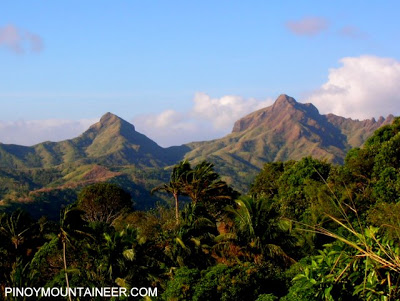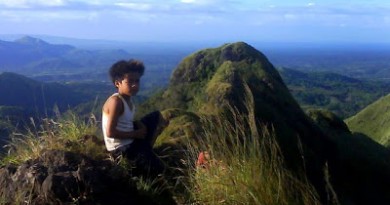Statement on guide requirements on easy mountains
A healthy nation requires a healthy population, and we need venues where people can do trail runs or leisurely walks for free (actually not really for free; we are also paying for it by way of taxes).
In the past, easy mountains like Manalmon, Maculot and Batulao have fulfilled this role, but now guides are being required. I reiterate my appeal to LGUs to stop requiring guides for all hikers in easy mountains – maybe except for first timers, solo hikers, and other special cases. But not for everyone. I repeat: my appeal is for easy mountains like Maculot and not for all mountains.
Safety concerns are understandable but there are other solutions, like having rangers to watch over campsites, proper briefing and orientation, and closing the mountain judiciously i.e. during the months or weeks with heavy rains, before a typhoon – not the knee-jerk reactionary closure we see in the past whenever something bad happens. We must also have the maturity to accept that accidents do happen, even in places where utmost care has been done to prevent them.
There are many ways to help locals that don’t impinge on the freedom of hikers, and that don’t add to the unnecessary financial burden for hikers. These include patronizing products and services at the trailhead. Also, there will always be a demand for guides – a voluntary, not a compulsory one.
Those who will point to other countries as an argument for compulsory guideship are way off the mark: in fact in a vast majority of trails in many parts of the world, like the Appalachian Trail or even Mt. Fuji, you can hike for free, and I say this from experience. Obviously this doesn’t include high-altitude mountains, or technical trails. But I repeat: we are discussing easy mountains like Maculot.
Consultations must be done with the local community and the hiking community before implementing any changes in policy. Our demand for accountability and transparency in registration fees, among other issues, should be listened to by LGUs.
Most importantly, we need a national government that recognizes the importance of the outdoors, as a venue for making the people healthy, as a home for various communities, and as an important treasure that we must protect.
This recognition must lead to the identification of free outdoor areas for every city, and a well-regulated, well-supported, properly-managed system of National Parks where the people can be encouraged to enjoy the outdoors responsibly.
Gideon Lasco
October 5, 2015




Leave a Reply
1 Comment on "Statement on guide requirements on easy mountains"
“A healthy nation requires a healthy population” and Mount Maculot is one of the venue for “trail runs and leisurely walk” for “mountaineers” or trail runners to keep them heathy. Trail of Maculot is not design for trail running, and it is not even properly design for hiking. In other words, the trail is a created pathway for local use… until its tread width gets larger, and its soil formation erodes exposing tree roots because of soil displacement (and its habitat are disturbed) created by thousands of visitors for many years.
We have long misunderstood the importance of our ecosystem services that our mountains and forests provide (that why we always have the perception that mountain should be “free”), but we have been slow on the pathway to realize that these things could be worth paying for and stewardship of our mountains has cost.
And that same “misunderstandings” and “misperceptions” from visitors (neglecting to put value to our ecosystem) reflects on the community’s perception on how much they will value their own natural resources – Mount Maculot’s registration cost is P 15.00. Mount Maculot doesn’t have yet the mandate to collect environmental fees because Mt. Maculot is partially within Taal Volcano Protected Landscape (TVPL/DENR/PAMB) which has more jurisdiction to manage, preserve and conserve the area as part of the TVPL.
There is also a big difference between taxes and environmental payments – environmental payment goes directly to the particular community or management and the money will help ensure that services and ecosystem benefits will be continue to be supplied and to sustain management of that particular place or ecosystem. Payment for ecosystem services can be an encouragement for management boards or stewards to continue to provide “ecosystem services” and other services to other party or society at large. While taxes on the other hand goes to general public fund which will be divided to different public services of the whole country.
But of course we are talking about guide requirements– to make it voluntary and not compulsory (or more likely the fairness of its implementation on the side of the mountaineers. But how about the side of the community?).
One reason that stands out why guides should be voluntary is (please correct me if I’m wrong) – Mount Maculot is an easy mountain (it was mentioned 4 times).
Easy mountain? Does it mean climbing the mountain without great effort or it is not that physically challenging? If we are going to put value on something as “easy” as Mount Maculot, what will its value be?
If we are going to list ecosystem services of our forest and mountains, its benefits and services is more than physical challenge and it benefits more than the mountaineering community:
– it supports nutrients cycle and soil formation
– it provides food, freshwater, wood, fiber and fuel
– it regulates climate, flood, disease and water purification
– it provides aesthetic, spiritual, cultural, historical and educational value
– it provides us good well-being – health, physical strength, social relations and cohesions, mutual respect and compassion and “freedom”
– it reminded us as that we are humans
A mountain that “easy” can’t just provide all of that services; and Maculot has the same ecosystem services that is being provided by other “difficult” mountains like Banahaw, Halcon and G2 for example. So, we cannot categorized or value mountain in terms of its physical challenge but the sum total of all its benefits.
Maculot has more than 300 flora species and 14 of them are endemic. It has “unidentified” spider (by the locals), a rare butterfly, a resident geckos in the “rockies”or “Indulaning” as traditionally called by locals, a historical caves (carved during Japapanese time) that housed fruit bats and balinsasayaws, and lots of stories. Stories like that of a mountaineer that artfully designed his final resting space, lining and fencing the area with packing tapes, using trees as corners and posts. And the story of Kap Gimo’s father that had lost and found and lost again… and other lost hikers.
Let us not just look at the benefits to us mountaineers of the mountain but on the benefits that it will provide to all – birdwatchers, researchers, ordinary visitors and that includes the community that is living near Mount Maculot – the whole society at large.
Now, lets talk about guides. But first, let us do some math, there are more or less 30 guides in Maculot. On a rotational basis, each guide can earn not more than 1,500.00/day – lucky are them if they can have 2 guide services in a day. Maybe during holy week they can earn more, how about off-season where they can earn just for weekends? They have families to feed and we have 7 days in a week. So do you think P500 or (P800 if traverse) is reasonable? And we are not yet paying ecosystem services. But of course, consultation should be made, a sustainable management plan should be in place, and visitors need should be provided – like structures, facilities and other services. And it has cost. What’s the IRA (Internal Revenue Allotment) of barangay/s in Maculot? Is it sufficient to manage the visitors and the mountain?
And what are the benefits the we get from our guide? Guides connect us to their people, to their environment, and their community’s history and culture. They are the way and guide for the stories of the place, they transfer knowledge and information to the visitors and they keep the story, culture and history of the mountain and the community alive by knowledge transfer (as community practice) to their descendants for future generation. Guides can show the way for achieving mutual understanding between strangers and local hosts for harmonious relation. And we are looking forward for sustainability.
If I will file a petition concerning Mt. Maculot, it will be for a good and sustainable management plan, for the development of sustainable trail and more training and seminars (for the guides and LGU’s) on how they will protect and conserve their natural resources. Or maybe, I will just help them build a good management plan. If we have a good and sustainable management plan, a community that cares for the environment and the other community, in the near future climbing Mt. Maculot will be almost free.
P.S.
“Appalachian Trail Conservancy is working with different Clubs, the National Park Service’s Appalachian Trail Park Office (APPA), the U.S. Forest Service and state agency partners. They collaboratively develop annual plans for Trail maintenance and land management priorities to effectively direct volunteer engagement and resource allocation” (from their website) – something that we need to do here (our natural parks, PAMB, are doing that – a public/private partnership, a collaborative approach in managing our mountains.
And yes, there is also a cost in climbing Appalachian Trail – hikers must have a budget for food, accommodation and transportation and so on. How much are we spending to climb Maculot especially those who are coming from Manila. And how much are we spending in other far away mountains? And yet all forest and mountains offer same ecosystem services. If we put more value on our mountains and the surrounding community, then the climb will be more an enriching experience and not just an easy climb.